We decided to investigate skateparks. I'm currently stuck at home/in quarantine so I can't go to skateparks physically at the moment. We have a skateboard at home and my sister and I always roam through the living room, so I drew my sister skateboarding at home. There are lots of limitations to skating at home, but it was interesting to try.
Things I find interesting about skateparks and want to investigate:
- Different groups: skateboarders, roller skaters, long boarders
- Why is there the stereotype that skating isn't for girls?
- Why is it popular?
- Do people skate alone? In groups?
- Fashion? Do people in skateparks dress in a particular way?
- Can you be at a skatepark if you don't skate?
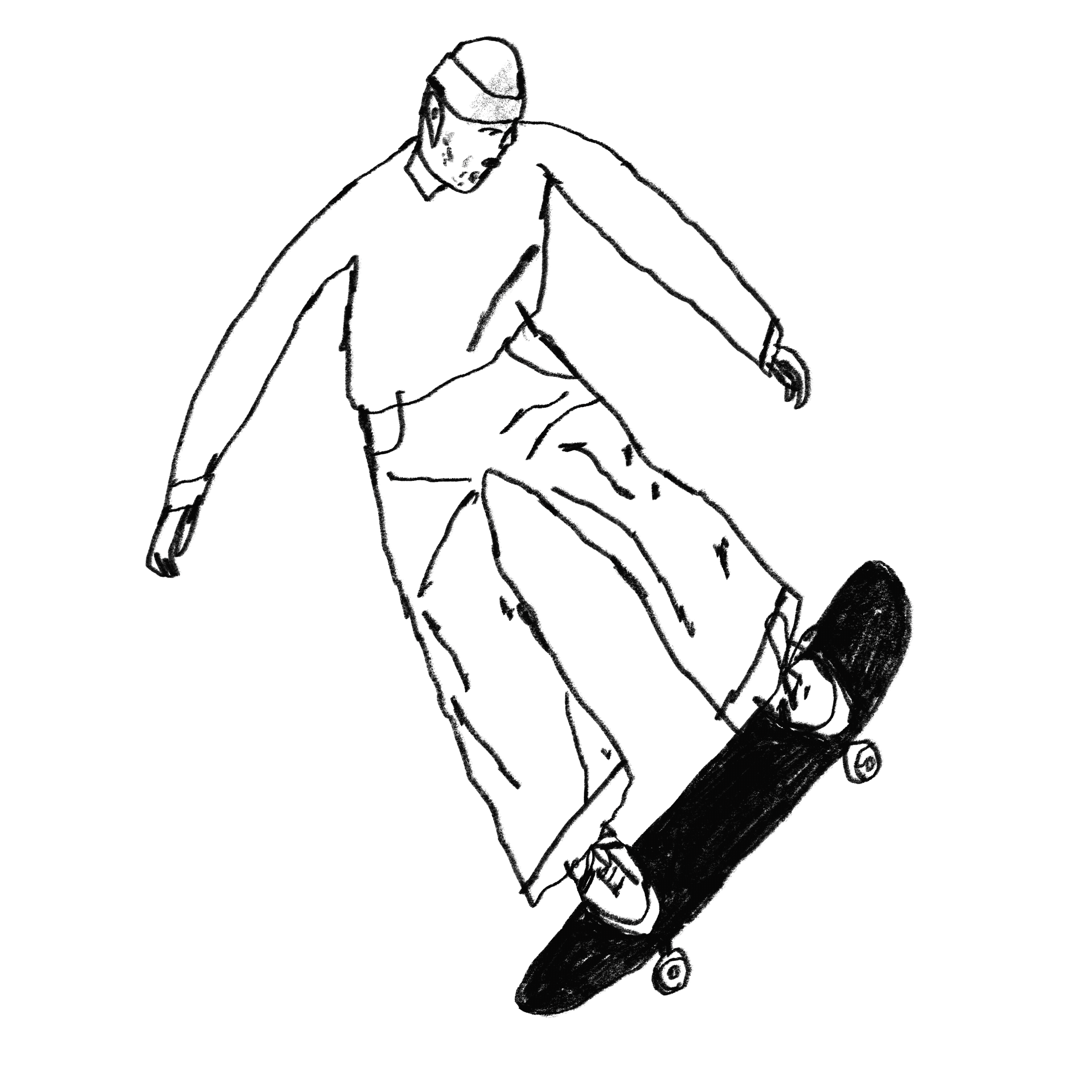
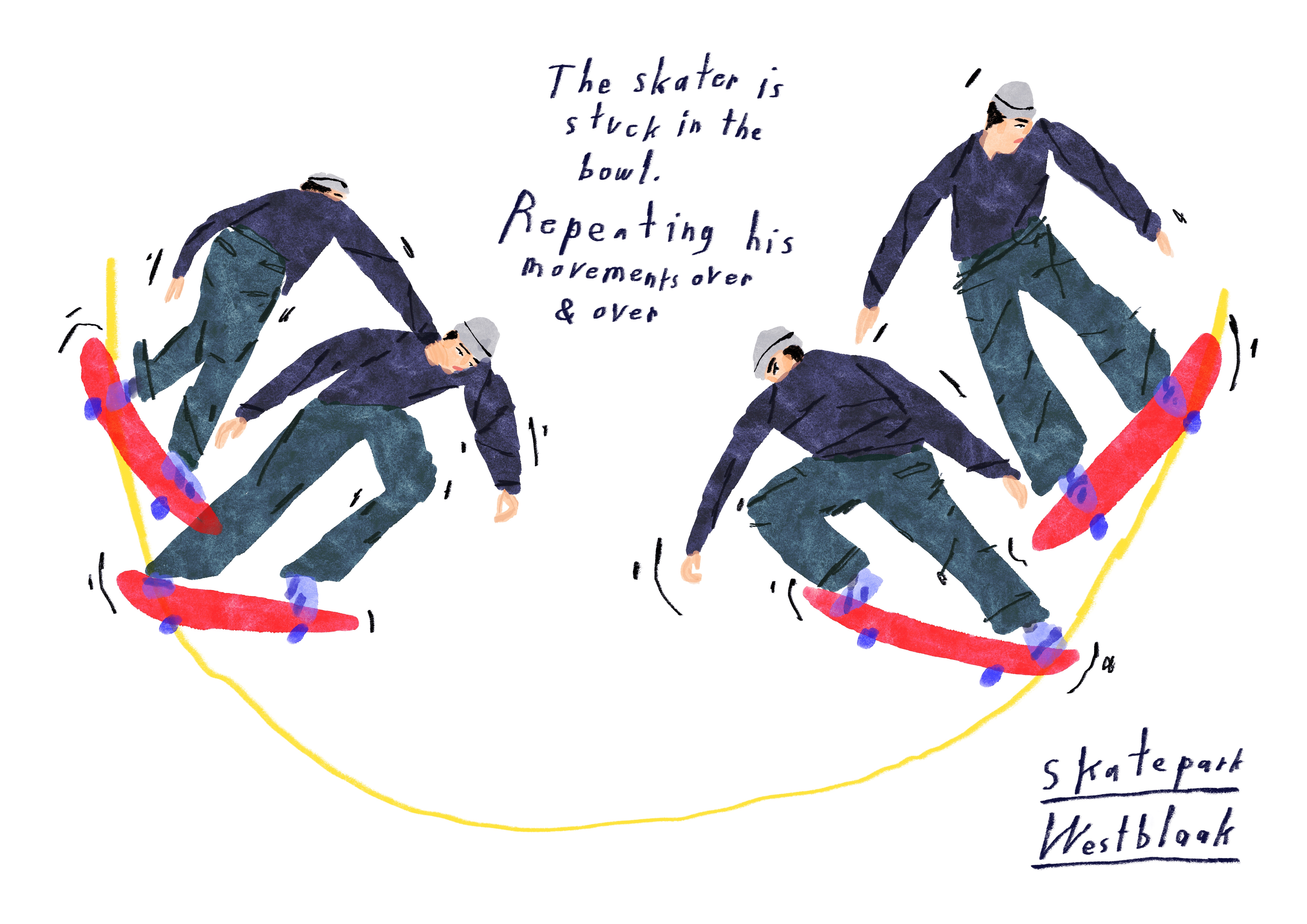
We decided to focus on only one skatepark, Westblaak. This is a mapping of a skater's movements and restrictions in a "skate bowl." Hanna took pictures of this skater and I illustrated them. One of the observations were that skater's movements are very repetitive. In the bowl, a skater is restricted in their movement, but also given more possibilities than skating on flat surface.
To go in the bowl is to make a statement, the skater goes deeper into the ground, but is actually standing on a pedestal. The bowl seems daunting for beginners, it can be scary to take the leap and skate in the bowl. You are vulnerable inn the bowl. There is an invisible wall around it.
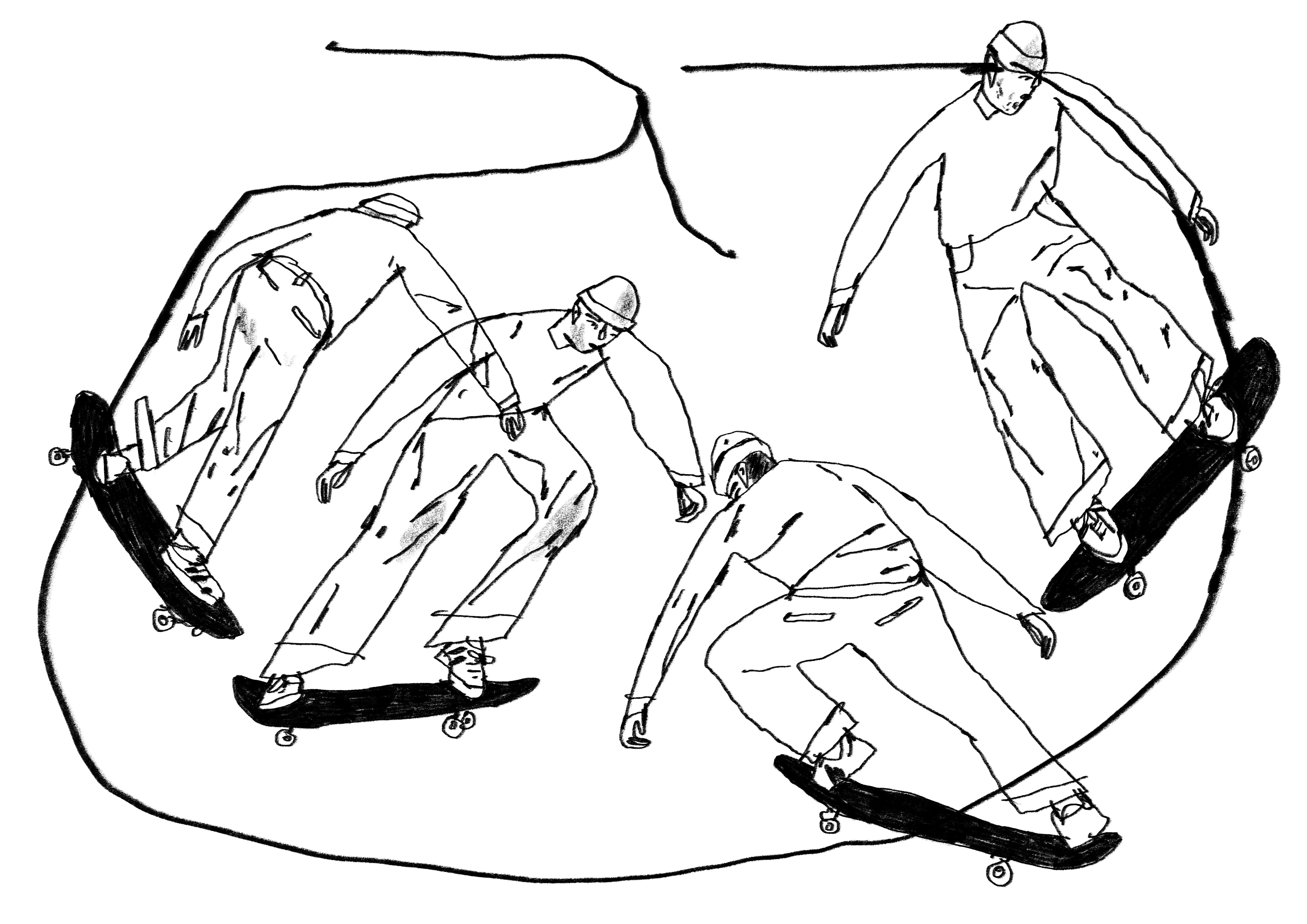
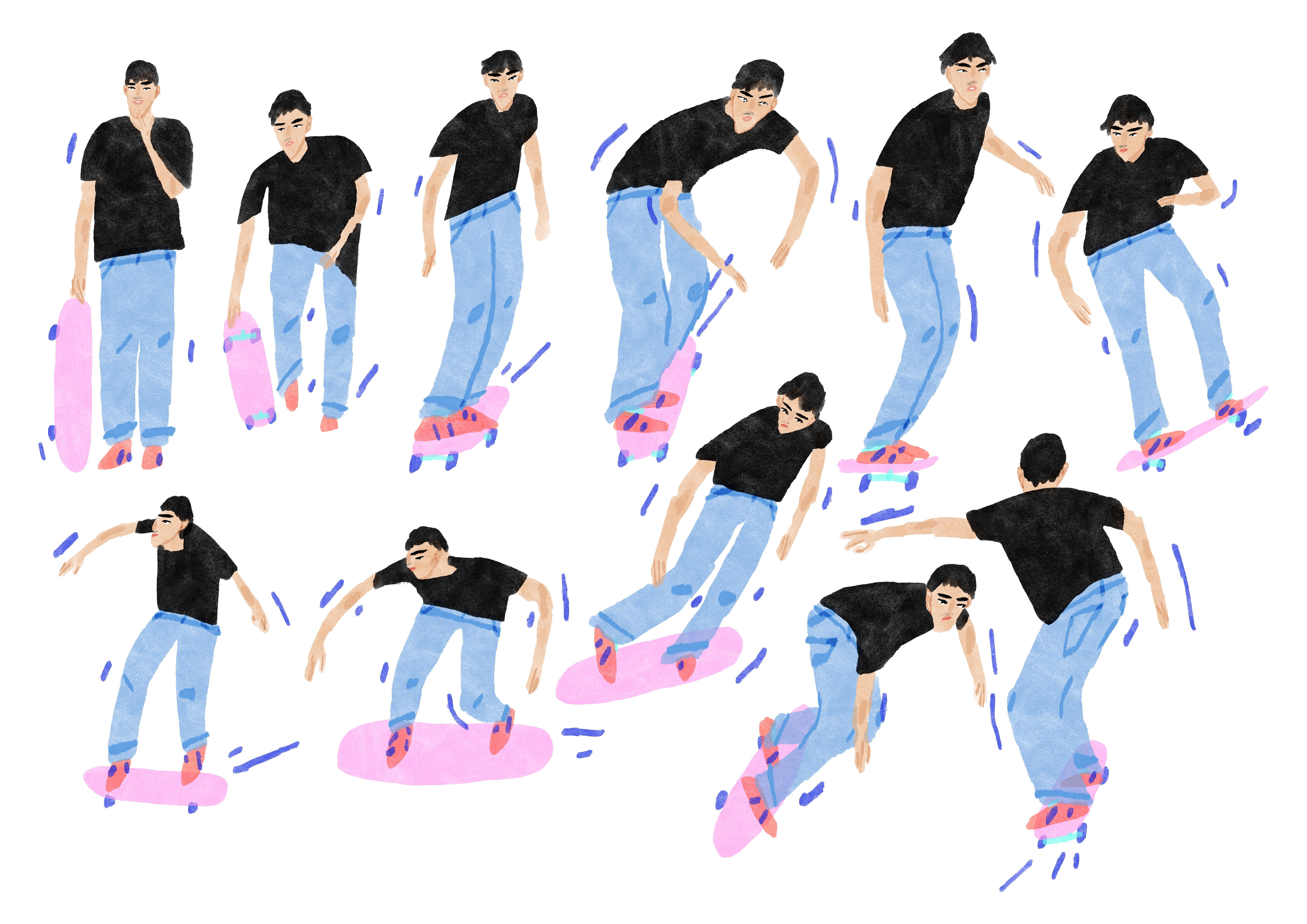
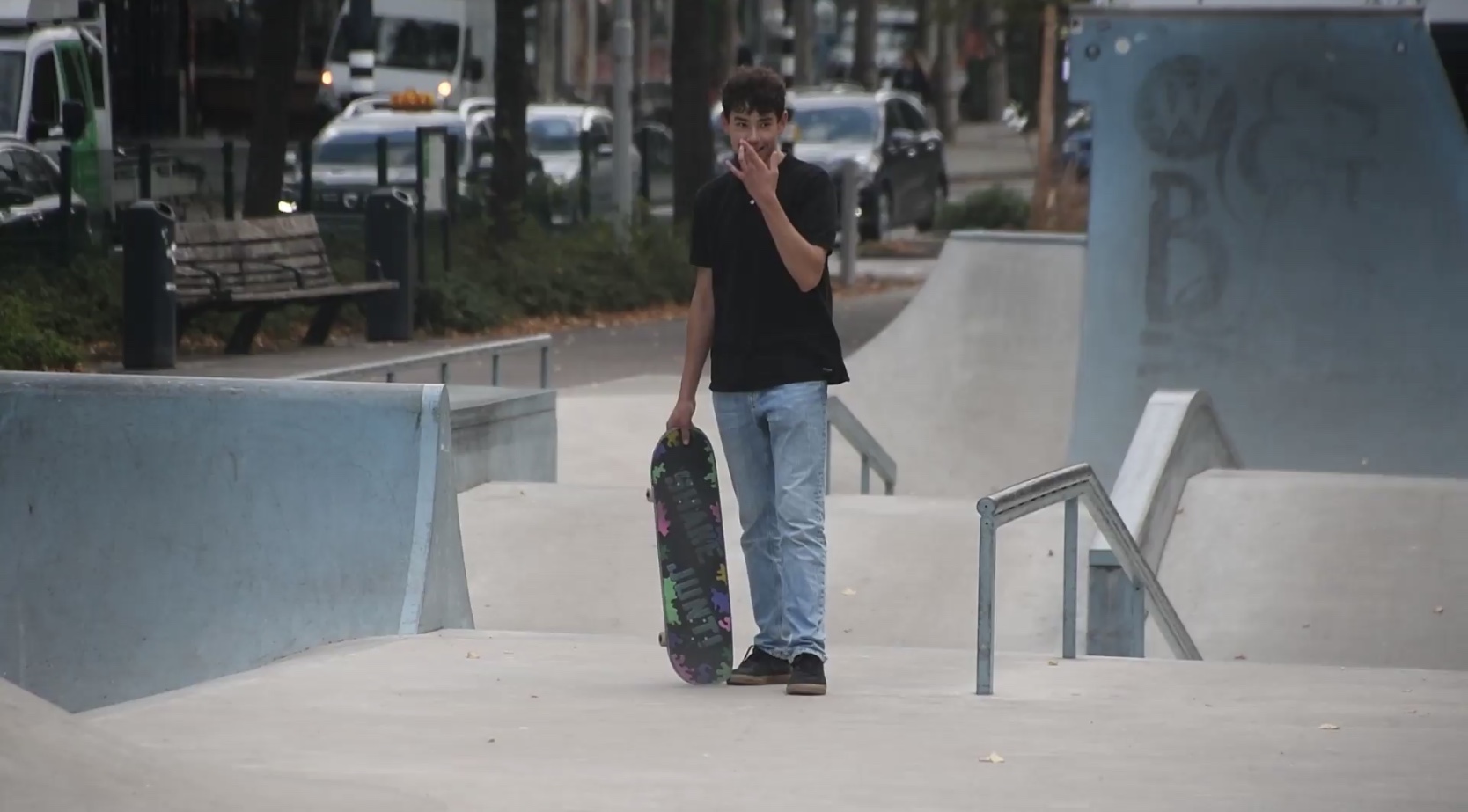
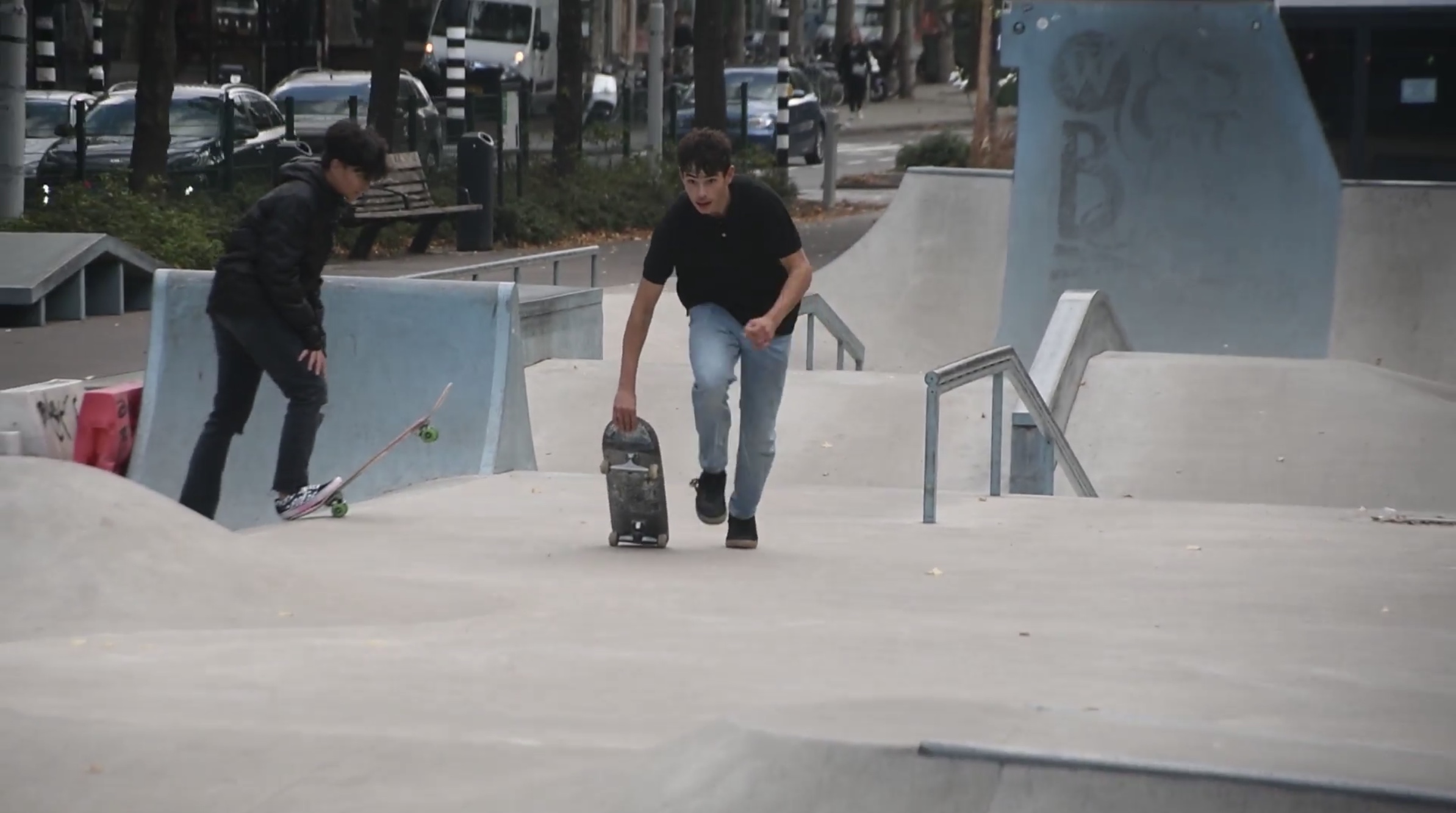
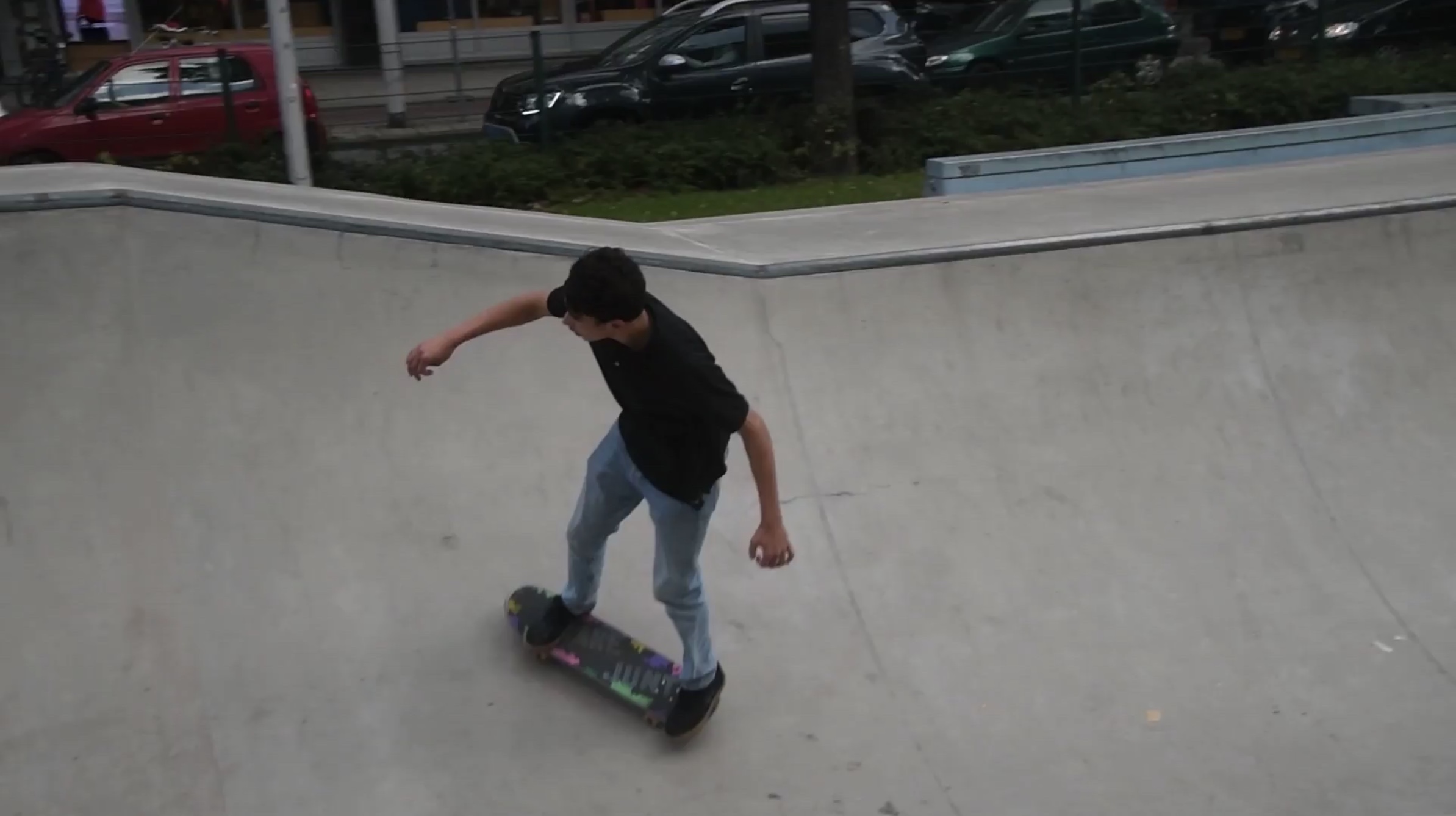
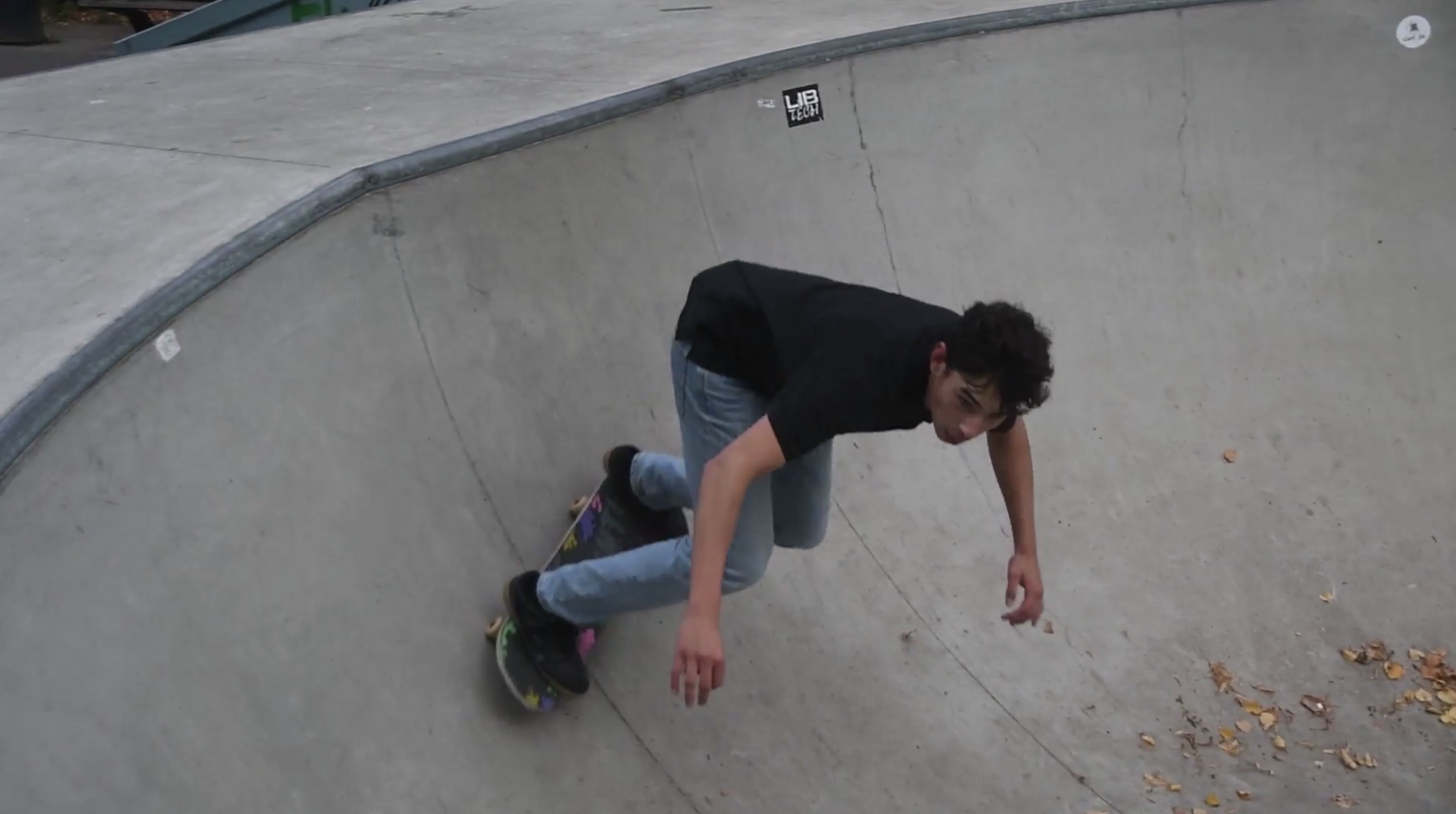
As a group we decided to our final work an interactive map on hotglue, on which you can select a space in the skatepark and you will be led to a new page with info about the social setting of it and visual representation. I have been working on creating maps of skater's movement in the most intimidating part of the skatepark, the skate bowl. Hanna took videos of a skater and I illustrated all of his movements.
Screenshots of Hanna's video